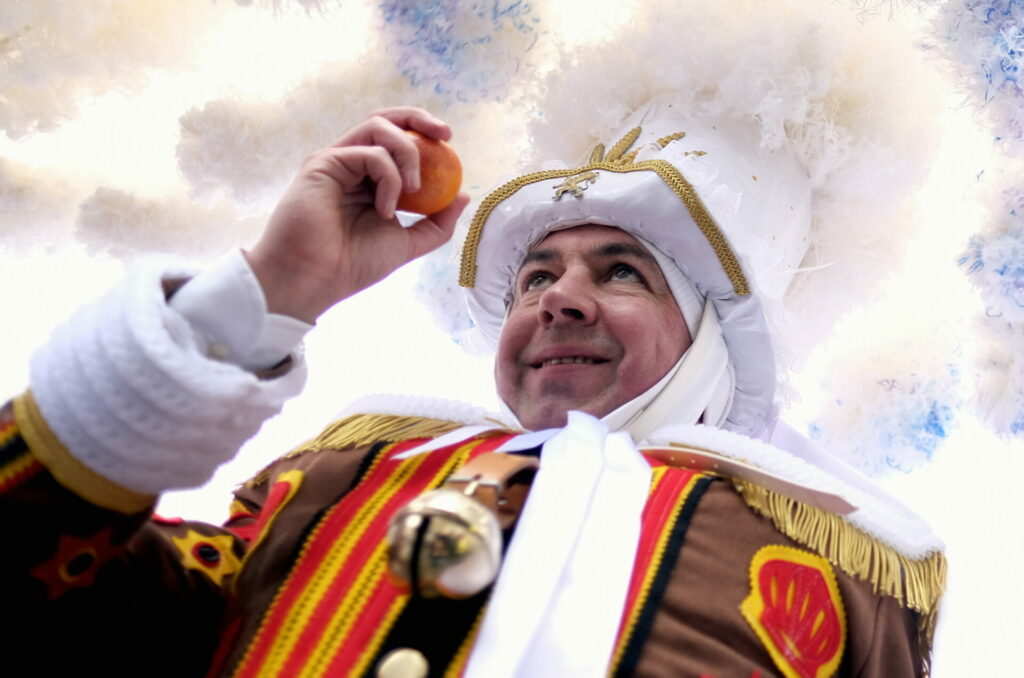Belgium's carnival season is underway, with small towns around the country rising to national attention as they display peculiar traditions and spectacular costumes. Especially renowned is Binche Carnival, where the custom of throwing oranges sets it apart.
Located in the province of Hainaut, Wallonia, Binche comes alive each year on the Sunday (Dimanche Gras), Monday (Lundi Gras) and Tuesday (Mardi Gras) preceding Ash Wednesday. It features one of the oldest parades of the several that take place in Belgium, with the habits preserved through generations.
Festivities this year started on Sunday 11 February and come to an end on Tuesday 13 February. It marks the beginning of a series of carnivals across Belgium in the following weeks. 2024 was noteworthy in that the town celebrates its 900th anniversary whilst also marking 20 years since the event was recognised by UNESCO as one of the Masterpieces of the Oral and Intangible Heritage of Humanity.
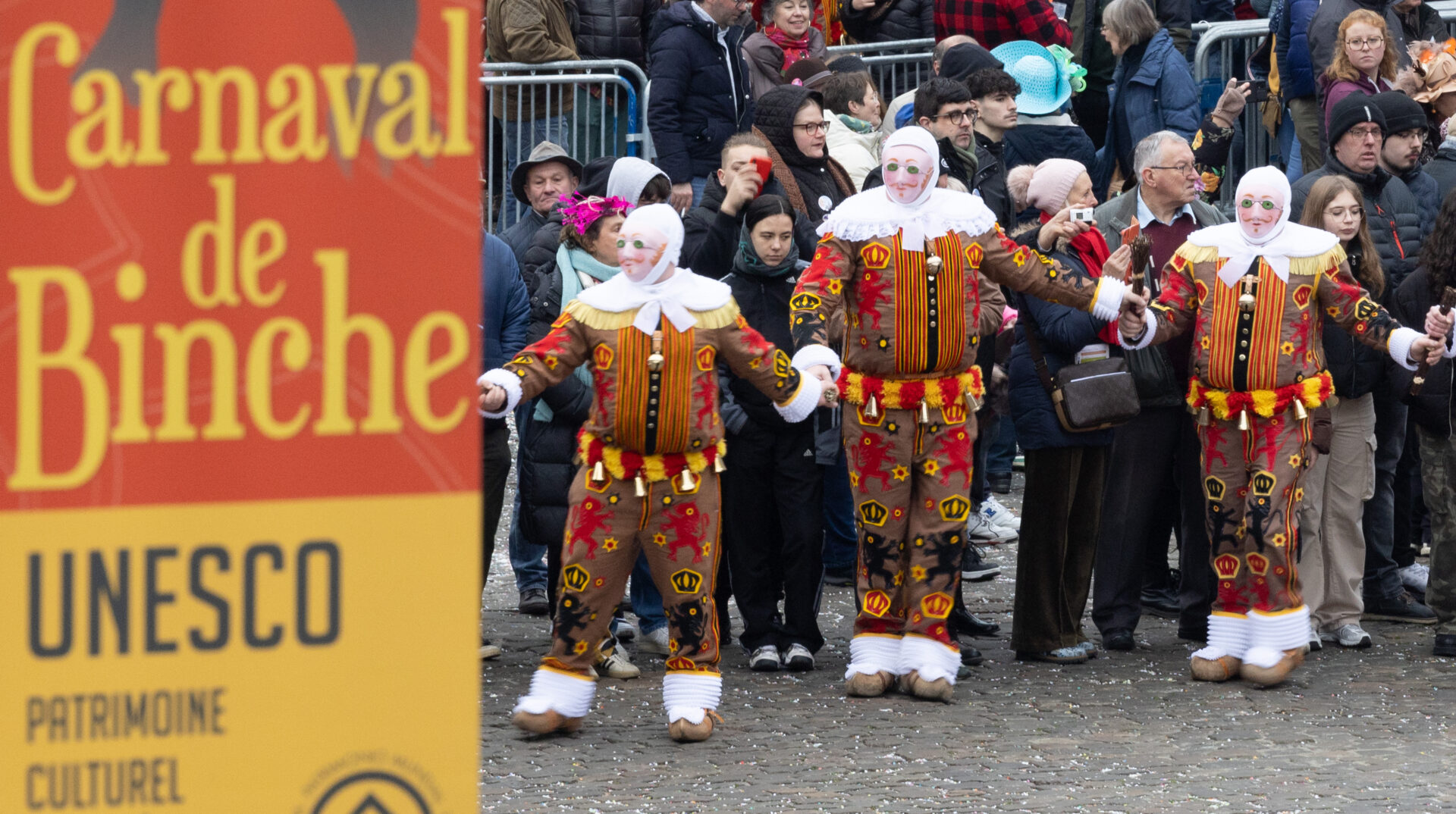
The 'Gilles' in the streets of Binche last year. Credit: Belga/ Benoit Doppagne
This year, over 1,200 performers took part over the three days while thousands of spectators will travel from far and wide to witness it.
The Gilles, stars of the carnival
After a day dedicated to young people on Monday, festivities culminated on Mardi Gras Tuesday, which starts early with the "dressing-up" as the Gilles don their traditional costumes.
The character of the Gille was created in the Middle Ages, with costumes consisting of a jute blouse ("stuffed" with straw at the front and back) and trousers decorated with 150 motifs in black, yellow and red felt. A collar made of pleated ribbons, lace or gold fringes, is fastened around their neck and wooden clogs complete the look.
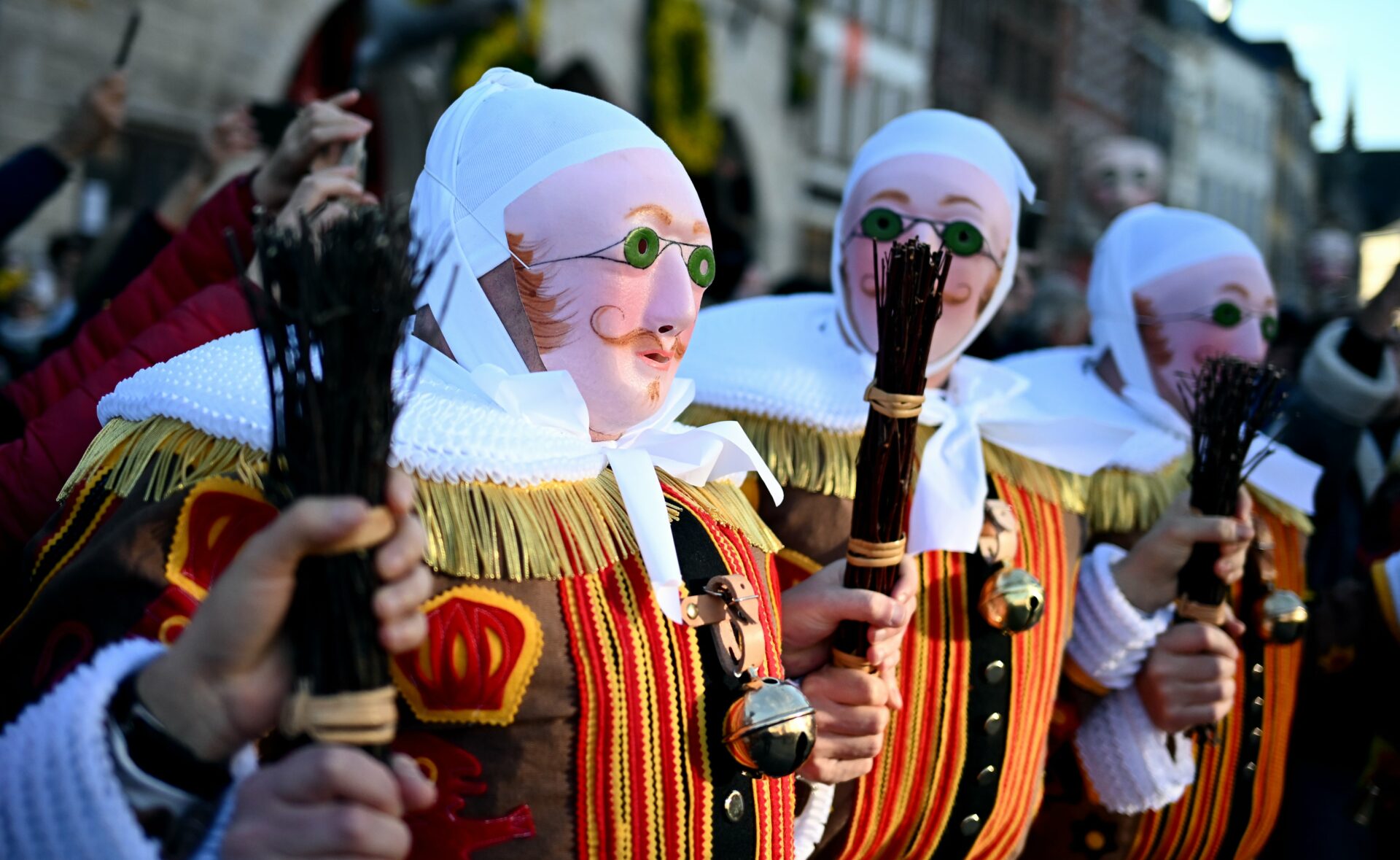
The Gilles Carnivalists on the morning of Tuesday 13 February 2024. Credit: Belga/ Eric Lalmand
The Gilles do not own these costumes but instead hire them from a specialist who makes them. In Binche, there are three – all from the same family.
The outfit is reserved for men from families from Binche or who lived there for at least five years, one of the many strict rules of the carnival. Gilles may not wear their costume outside the special day and the clothes must not travel outside the town – hence the expression "The Gilles of Binche never travel".
At dawn the first Gille, equipped with his Ramon (made from a bundle of dried willow sticks held together by rattan ligaments), leaves his home and collects the other Gilles, accompanied by a drummer. Around 07:00, the troop is complete and they enjoy a meal of oysters and champagne.
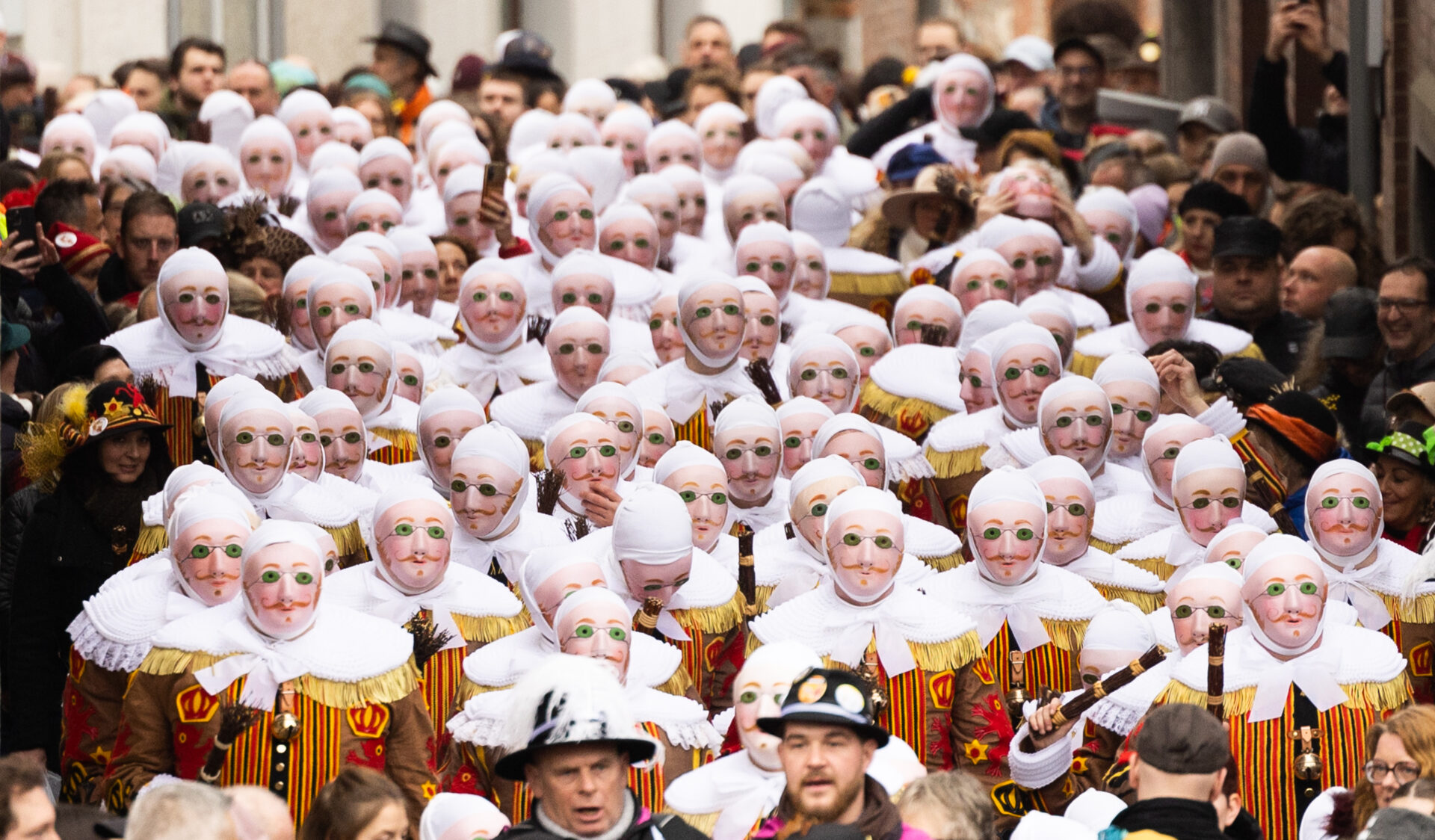
Credit: Benoit Doppagne / Belga.
From 08:30, they put on their famous masks made of wax cloth and decorated with green glasses, a moustache, a goatee and sideburns, and head to the town hall. They are joined by the most traditional characters of the carnival, including the Paysans (the Peasants, often nicknamed the Prince of Carnival, who are also masked and wear feathered hats) and Marins (The Sailors, with a black eye mask and sailors outfits).
Joining the Gilles are the Pierrots, characters inspired by the Comedia Dell'Arte. They wear conical hats. Also in attendance are Arlequins, who wear Arlecchino half-masks trimmed with fur and shirts and trousers printed with yellow, red and green triangles.
The participants gather on the Grand Place, where they are welcomed by the municipal authorities for the presentation of medals to the jubilarians, and enter the reception at the Town Hall. Around midday, participants return home for lunch.
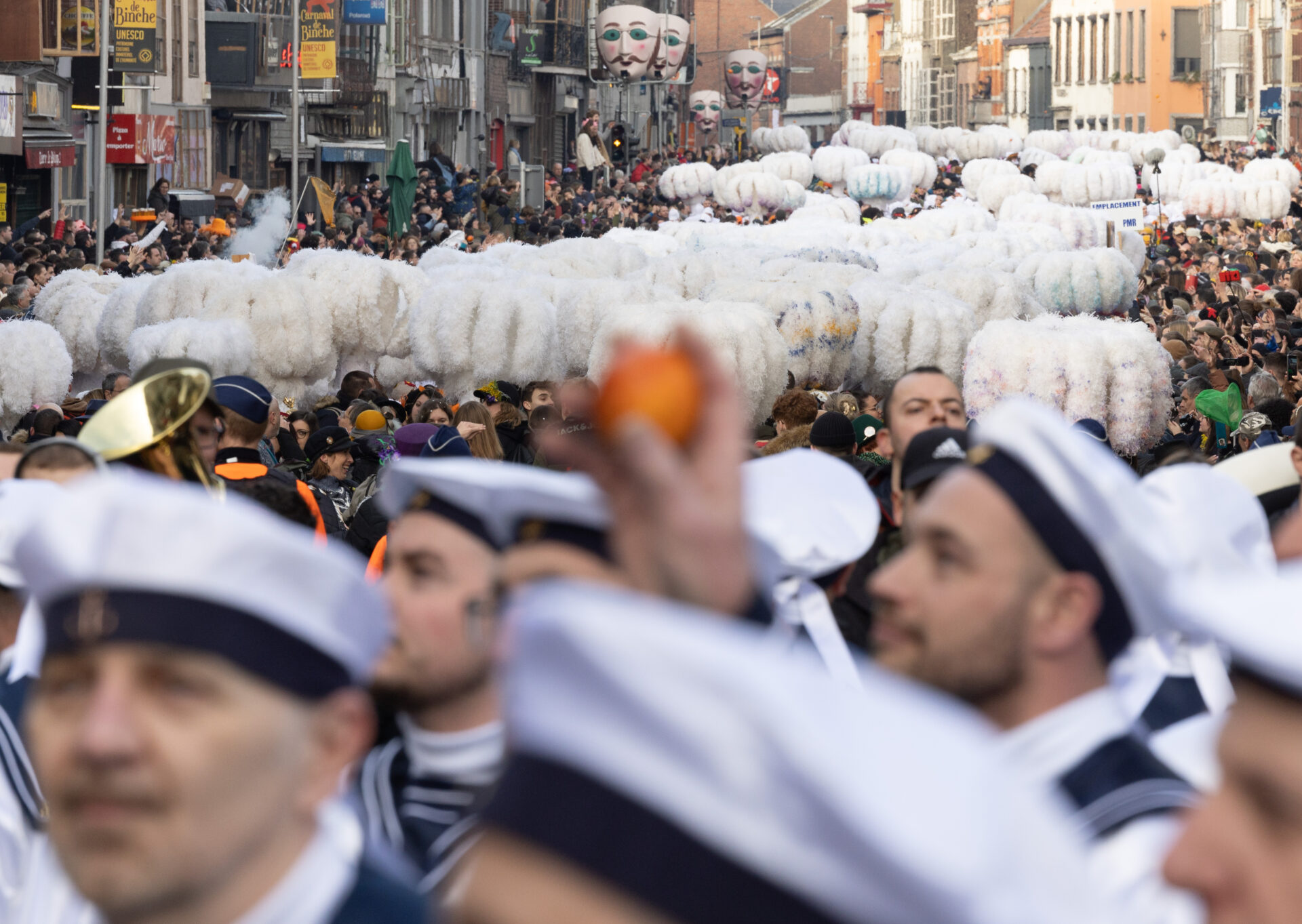
The Binche Carnival in 2008. Credit: Belga/Benoit Doppagne.
Good-luck gifts
The afternoon brings the Mardi Gras procession to the Grand Place. Accompanied by drums, the Gilles wear majestic ostrich feather hats and carry oranges in baskets.
This procession sets Binche apart, as the Gilles throw oranges to the public. Before the middle of the 19th century, the Gille offered bread, eggs and local fruit to help the public "fatten up" before Lent.
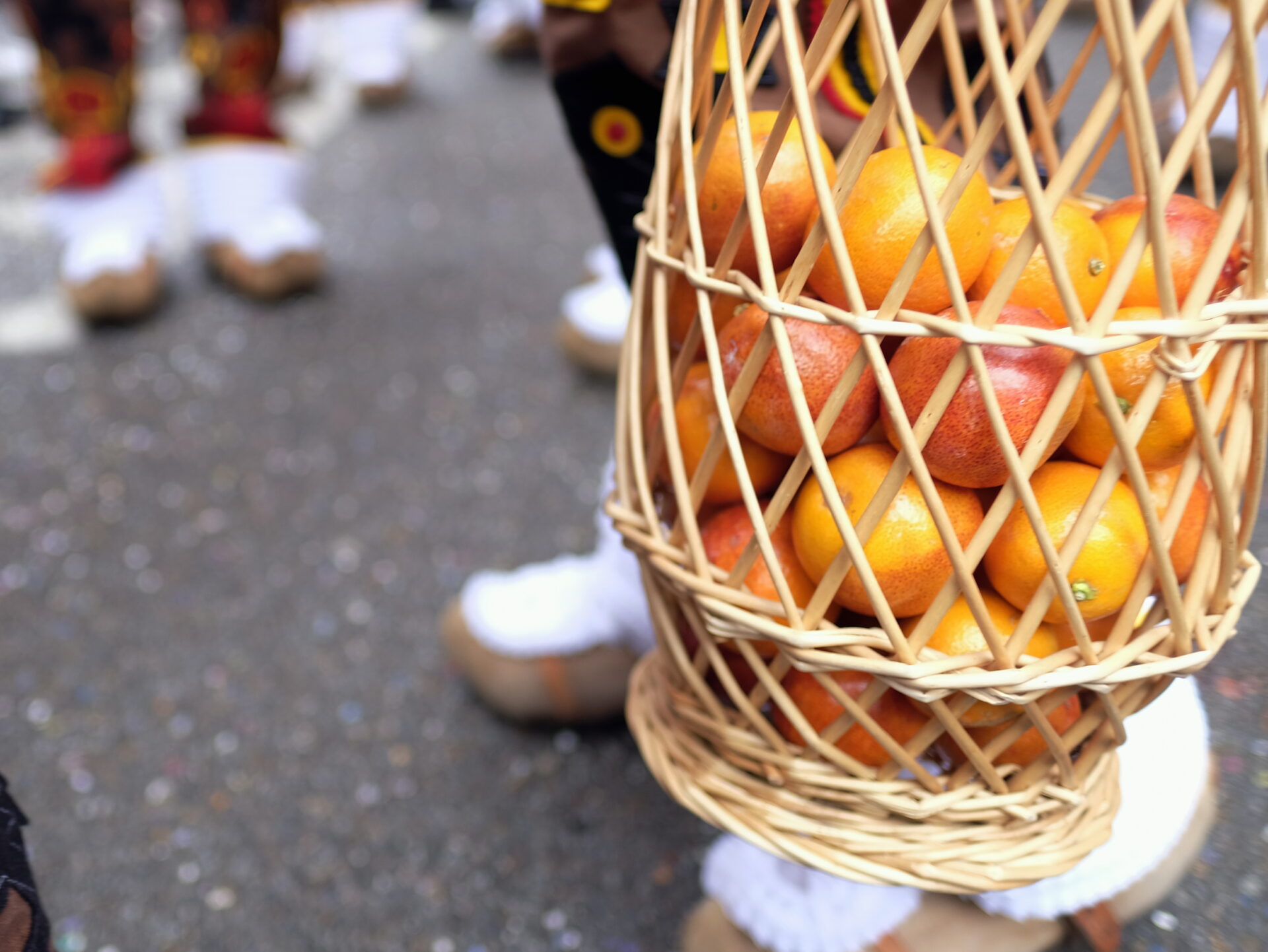
The Gilles walk around with baskets filled with oranges. Credit: Belga/ Eric Lalmand
When oranges first became available, their high cost meant that only shopkeepers and the bourgeoisie could afford to join the Gilles and access to the valuable fruit was limited. Oranges progressively came to be signs of wealth and generosity and now are a hallmark of the whole event.
One Gille throws around 30 kg of oranges during the carnival. Their baskets are refilled by helpers with backpacks. The fruits are considered a good-luck gift and as such, it is bad luck to throw one back.
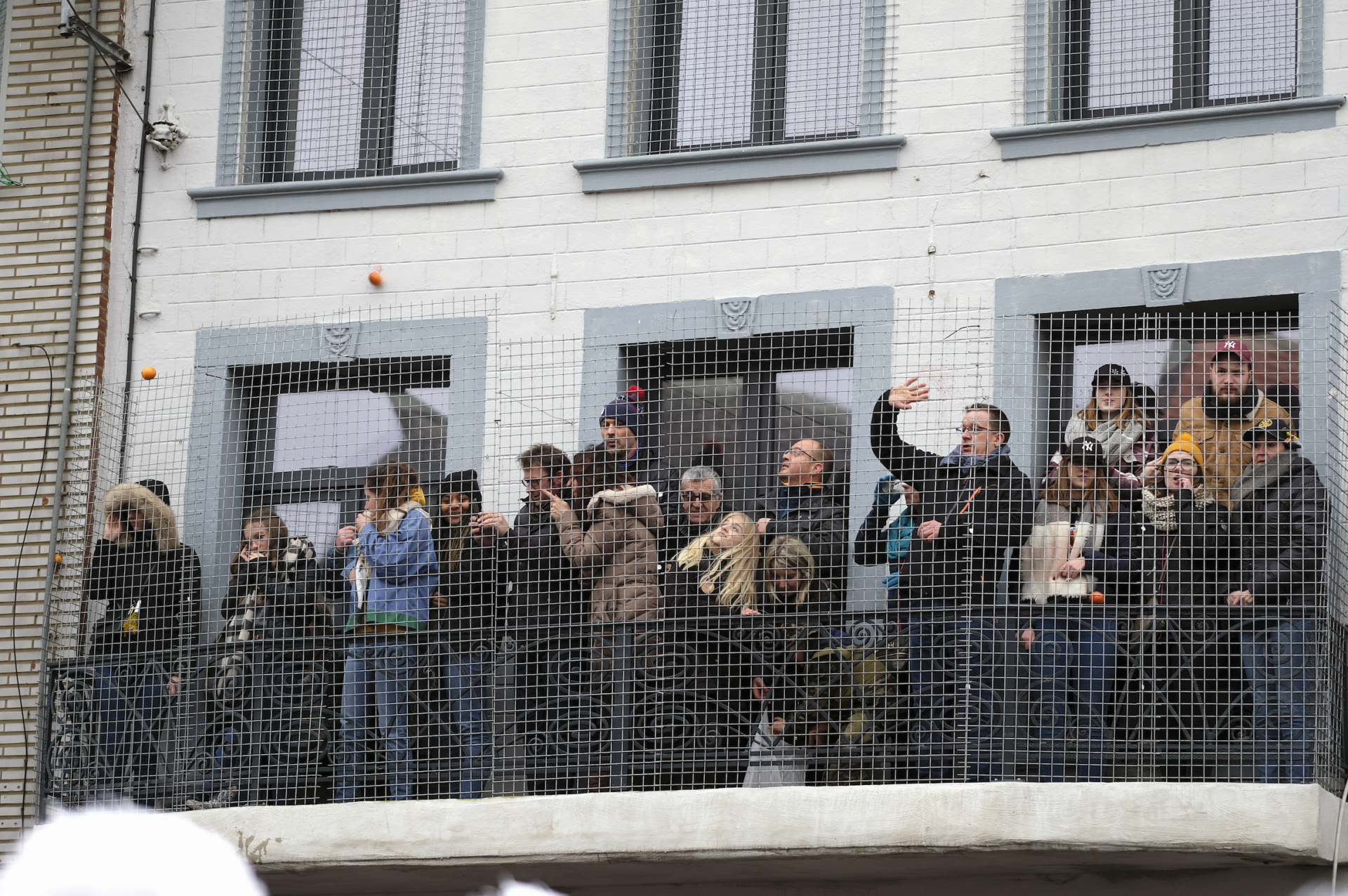
Credit: Belga/ Eric Lalmand
In the course of the action, it isn't unusual to see bleeding noses or spectators hit on the head – especially among the crowd further towards the back who don't spot the projectiles in time. Windows are protected with netting.
By 20:00 the evening procession begins. This follows the same route as in the afternoon but this time by the light of sparklers. By this point, the baskets are empty as all oranges have been handed out and the Gilles have taken off their hats.
At around 21:00, the Grand Place is set ablaze with fireworks, bringing the Carnival to a close with an illuminated "Plus Oultre" (Charles V's motto, meaning "further and further away") as a finale. The participants, divided into so-called "companies" continue to dance the night away to the sound of the drums, but the last participants must be back home before daybreak.
Whilst the tradition of Gilles and orange throwing started in Binche, other carnivals in Belgium – including Aalst and Halle – copied the custom. Their Gilles look slightly different but also throw oranges.

